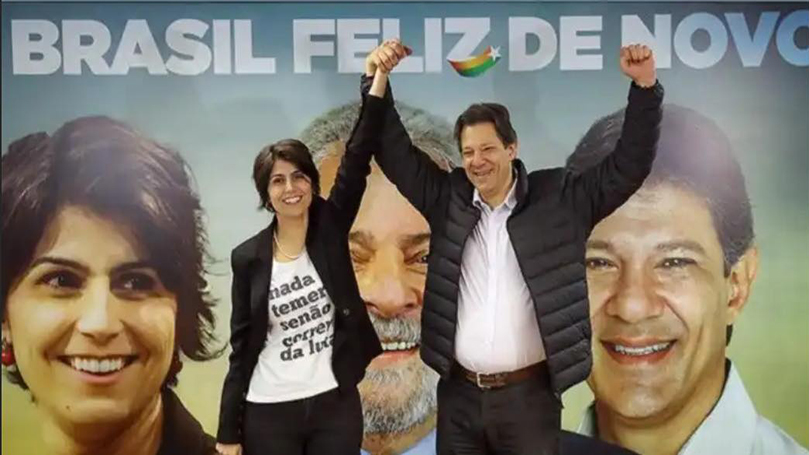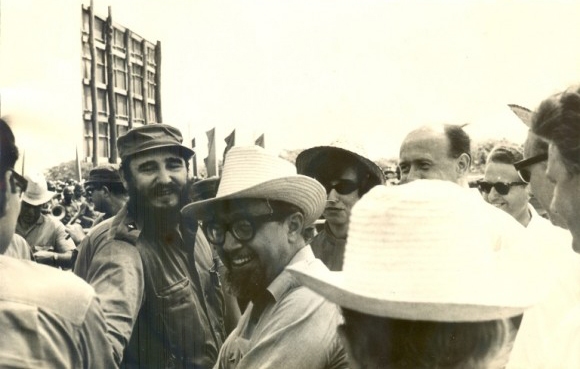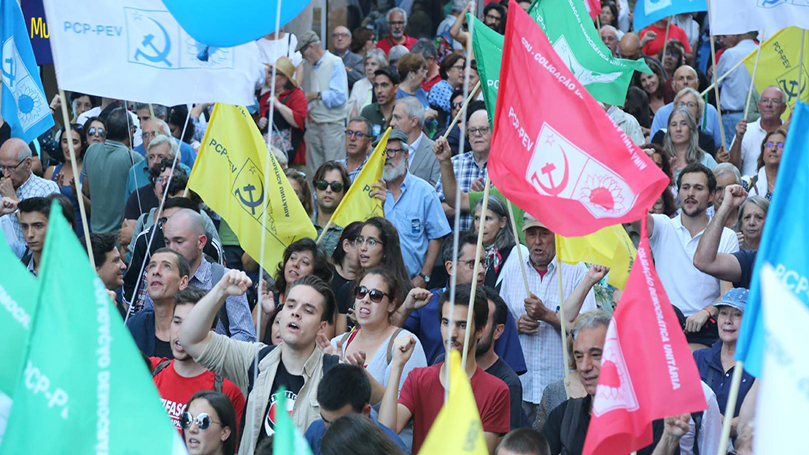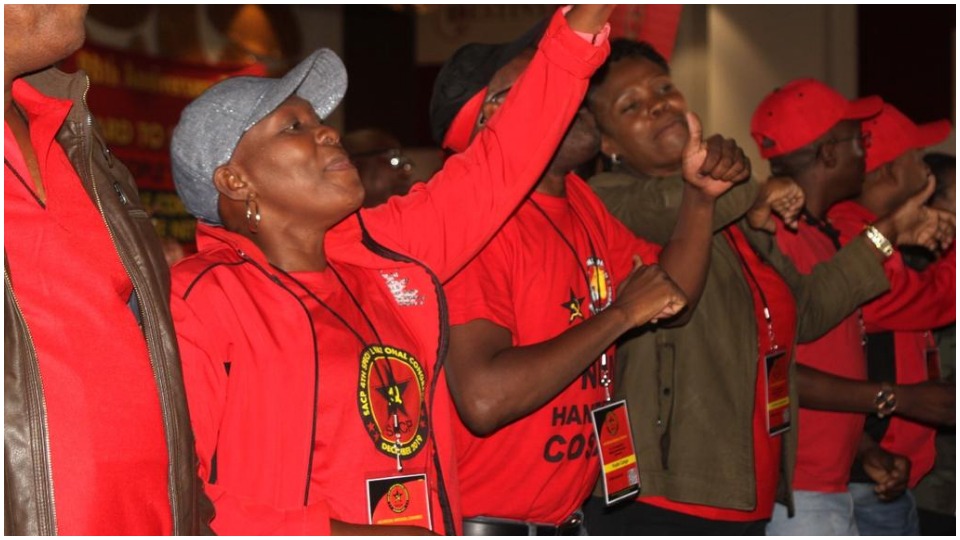
One of the perennial debates in the world communist movement is on the issue of coalitions and united fronts: whether communists should participate in them, and if so, how and under what circumstances. A few parties, claiming the communist or Marxist-Leninist title, oppose participating in such cooperative structures. Most, however, taking off from Dimitrov’s 1935 report to the 7th Congress of the COMINTERN, in which he called for an end to self-isolating sectarianism and the building of people’s fronts against fascism and war, work hard to coordinate their tactics with other parties and organizations, including some which are not even part of the working class.
Communist parties in power
Immediately after the October 1917 Revolution in Russia, the new government was formed, not by the Bolshevik Party alone, but by a coalition between the Bolsheviks and the Left Social Revolutionaries. But this coalition did not last: in July 1918, the Left Social Revolutionaries assassinated the German ambassador, Count Wilhelm von Mirbach-Harff, with the purpose of undermining the Brest-Litovsk Treaty, of which they disapproved as being too favorable to Germany and Austria-Hungary. The Left Social Revolutionaries evidently thought that this act would renew the shooting war between Russia and Germany, undercutting the Lenin government’s strenuous efforts to put an end to the war. This put an end to the coalition.

In Cuba, the alliance that brought about the revolutionary triumph on January 1, 1959, was quite heterodox. Fidel Castro’s own organization, the Twenty Sixth of July Movement, was not organized by the historic communist party of Cuba, at that stage called the People’s Socialist Party (Partido Socialista Popular, or PSP), which was mainly focused on labor struggles and was initially suspicious of the guerrillas in the hills as possibly irresponsible adventurists. The 26th of July Movement worked closely with the Revolutionary Directorate (Directorio Revolucionario), a student-based organization in the cities. Eventually, the PSP decided to cooperate with the 26th of July Movement, after one of its top leaders, Carlos Rafael Rodríguez, made a trip to Castro’s mountain headquarters. After the fall of the Batista dictatorship, elements of all three organizations worked together to formulate the policies of the new government, but not always in harmony. In 1965, the most socialist-oriented elements of all three organizations came together to form the Communist Party of Cuba we know today. Details of the complex interactions among the three organizations and their relationships to the Cuban working class can be read in A Hidden History of the Cuban Revolution: How the Working Class Shaped the Guerillas’ Victory” by Steve Cushion (Monthly Review Press, 2016).
In Vietnam, the Communist Party successfully defeated France, then Imperial Japan, then France again, and, finally, the United States, to achieve national independence and a path to socialism. But they did not do it alone. The communists, headed by Ho Chi Minh, worked both politically and militarily with, and through, a broad front organization called the “League for Independence of Vietnam,” whose abbreviated name in Vietnamese was “Viet Minh.” This front consisted of the communists plus a number of non-communist groups, whose aim was to oppose imperialism, be it French, Japanese, or American. The Viet Minh structure was eventually disbanded after the U.S. and allies were defeated, but even today, the Vietnamese Communist Party governs in a broad front coalition, the Fatherland Front, with a large number of other groups and organizations.
After the Second World War, socialist governments came to power in a number of Eastern and Central European countries, with the communists as the leading forces. But again, usually the communists ruled in coalition with other left and left-center parties and organizations: in Poland, Czechoslovakia, and the German Democratic Republic (“East Germany”) this was particularly notable.
Communist parties in opposition
Communist parties out of power frequently — more frequently than not, actually — work to create united front structures of various kinds. They find this necessary as a way to exert maximum pressure on the state, to isolate the most dangerous elements of the ruling class and the political right, and to maintain their ability to communicate with, and influence, all sections of the working class and masses, rather than just those who already support the whole communist program.
There are several ways that ideologically different political parties and organizations can work together for common tactical and even strategic goals, and communist parties around the world have used all of them at one time or another.
One is by forming structured coalitions. This means that the different organizations sit down together and formally agree on certain things:
*A minimum program. This is the sum total of goals, strategies, and tactics on which the several organizations in the coalition agree to work on together. The participating organizations commit to this minimum program but are absolutely free to criticize and oppose each other on things that are not part of the minimum program.
*In many cases, structured coalitions entail electoral agreements. Frequently this involves agreeing to support each other’s candidates instead of running their own candidates, according to a calculation of whose candidates have the best chance of winning in a given district. This is particularly common in Western European countries with parliamentary systems, such as France.
Such formal, structured coalitions are common in countries with parliamentary electoral systems and multiple parties, no one of which is strong enough to take and hold power without the support of others.
A second way of doing this is by avoiding structured coalitions but offering “support from the outside” for another party or coalition which is trying to form a parliamentary majority.

In Portugal, for example, the ruling party at the moment is the Socialist Party (Partido Socialista). It is not in a coalition with anybody, but was able to take power and stay in power because of the “support from the outside” by the formal, structured coalition of two other parties: the Portuguese Communist Party and the Ecologist Green Party, whose long-standing electoral coalition is called the Unitary Democratic Coalition. Support for the Socialist Party government has also come, separately, from another left-wing formation, the Left Bloc (Bloco de Esquerda), which itself is the product of the merger of several smaller parties. Together, the Communist-Green coalition and the Left Bloc hold enough seats in the Portuguese lower house, the Assembly of the Republic, to prevent the right-wing parties from ousting the Socialist Party from power. But they have not asked for portfolios in the cabinet of the Socialist Party government of Prime Minister Antonio Costa. As the Portuguese Communist Party sees it, the “supporting from the outside” strategy, which began after the elections of 2015, was advantageous for two reasons. First, it silenced right-wing figures in the Socialist Party, who seemed willing to give up the idea of taking power, or even joining in a coalition government with right-wing parties, rather than accept a coalition with communists (thus leaving the former right-wing coalition in control), and it leaves the Communist Party free to be sharply critical of Mr. Costa’s government on certain matters. So, for instance, the Communists and their Green coalition partners can extol certain pro-working-class measures Costa’s government has taken, while sharply opposing its continued participation in NATO and the Eurozone.
Another interesting example is Venezuela. That South American country, under a vicious siege by imperialism, has been governed in recent years by a coalition called “The Great Patriotic Pole,” which includes 15 leftist and left-center parties. The Communist Party of Venezuela has been part of the Patriotic Pole but has frequently been critical of the domestic policies of President Nicolas Maduro, of the larger United Socialist Party of Venezuela (PSUV). So last month, the Communist Party, the Homeland for All Party, and several other organizations announced the formation of a new united front group, the People’s Revolutionary Alliance of Venezuela, which will participate separately from the Great Patriotic Pole in legislative elections scheduled for December 6. However, the Communists continue to firmly defend the Venezuelan government against attacks by the United States and its allies, and by the right wing within Venezuela.
United front formations, working within and outside electoral and legislative structures, are very common in other Latin American countries, including Argentina, Brazil, Uruguay, and the Dominican Republic, to name a few.

In African nations, one finds similar strategies. In South Africa, despite some sharp differences of opinion, the South African Communist Party (SACP) has not broken from the Tripartite Alliance, a formal coalition, in which its partners are the ruling African National Congress (ANC) and the Congress of South African Trade Unions (COSATU). In Sudan, also, in the process of shaking loose from decades of right-wing dictatorship, the Sudanese Communist Party has not “gone it alone” but worked with a variety of other organizations, depending on the stage of the struggle.
In India as in several other countries, the communist movement divided in 1964, during the Sino Soviet split. The two largest parties that emerged from this split were the Communist Party of India (CPI) and the Communist Party of India-Marxist (PCI-M). But that was a long time ago, and these two parties, along with other socialist and leftist formations, generally coordinate their activities, including electoral and legislative work. Currently, Indian communism’s greatest success story is in the state of Kerala, where the CPI-M and the CPI between them have a majority of seats in the state’s Legislative Assembly. But they have not stopped the coalition approach with the union of the two communist parties; they rule through the Left Democratic Front, which includes 10 other left and left-center entities as well.
In the vast majority of these cases, the communist parties enter into coalition, united front, or informal cooperative agreements because they think their presence is necessary to assure that working-class interests are represented and defended. In their opinion, not to do so would be purist theater which would harm the interests of workers and other vulnerable and oppressed sectors, by helping to isolate them.
And there is another consideration too: politics, like nature, abhors a vacuum. If the genuine left, meaning the communist parties and some other left-wing formations, do not reach out to any sector of the working class and the masses, someone else will, including right-wing populists and even fascists.
What could possibly go wrong?
If communist parties, in coalition with other tendencies, including bourgeois ones, forget their own distinctive nature, roots in the working class, and socialist goals, things can go very wrong indeed. It can lead to a weakening of the communist party’s ties to the working class, and ultimately to the liquidation of the communist party.
This happened in the immediate aftermath of the Second World War when Earl Browder, who had been the General Secretary of the CPUSA (and changed its name to the “Communist Political Association”) drew some unwarranted conclusions based on the wartime cooperation among the Soviet Union on the one side, and the United States, the United Kingdom, and other capitalist powers on the other. Browder promoted the idea that cooperation between communists and capitalists, even finance capitalists like J. P. Morgan, could spread and last far into the postwar future, bringing about a happy convergence of capitalism and communism. This shelved the socialist goal of communism as well as downplayed the class struggle needed to achieve it. Unfortunately “Browderism” also resonated within the leadership of a number of communist parties in other countries, especially in Latin America. Browder was eventually expelled from a rejuvenated CPUSA, and his opportunistic ideas repudiated.
There was a similar episode two and a half decades later, during the 1970s and 1980s, known as “Eurocommunism.” Again, there was a moving away from their working-class roots by several Western European and other communist parties, and an abandonment of class struggle and anti-imperialist solidarity as anchors of their principles. The result was disastrous: several communist parties, including the huge Communist Party of Italy and the once influential Mexican Communist Party, liquidated themselves completely, and others were severely damaged. (The circumstances that led to the collapse of the socialist states of Eastern and Central Europe are of great importance but not within the purview of this article.)
But neither Browderism nor Eurocommunism was “caused” by communist parties working in united fronts with other tendencies, but rather by their theoretical confusion and their abandonment of core principles and core working-class constituencies. In contrast, most of the other communist parties, while recognizing the tactical necessity of working in such united fronts, made sure that they maintained and defended their own ideological, theoretical, strategic, and tactical independence from the social democrats, bourgeois liberals, and centrists, etc., with whom they found it necessary to work in specific circumstances. This implies the right and responsibility to sometimes sharply criticize and oppose those with whom, in other contexts, one finds it necessary to coordinate actions.
The current actions of the Portuguese communists are a good example. They have prioritized blocking the return to power of the right-wing Peoples Party and its allies, but sharply distinguish their anti-imperialist, Marxist-Leninist stance in contrast with the Socialist Party government, as in their highly critical statements in opposition to the way the interests of Portuguese (and other) workers are subordinated in the “European integration” process. Browder sowed, in contrast, illusions about an imaginary convergence of communism and capitalism just at the point that monopoly capital was getting ready to fire up the Cold War and McCarthyism.
Where does the CPUSA fit in with all this?
Some think we have a “coalition” arrangement of some sort with the Democratic Party; we do not. We do not even endorse, as an organization, candidates of parties other than our own. However, we are open to working with other forces, on a short-, medium-, and long-term basis if, in our assessment, doing so will strengthen the position of the working class in the class struggle, prevent the rise of fascist and racist groups, prevent war, stop the destruction of the natural environment, and other goals we share with many very different tendencies in U.S. politics. As a relatively small (though growing) party, we do not have our own voting bloc of representatives or senators in the U.S. Congress, or in state legislatures, though we do sometimes have our own candidates for local offices. Given the political balance of forces in this country, we see such coordination for united political action as essential for the future of humanity.
And now, with a fascist movement being nurtured by President Trump and important sectors of the ruling class and Republican party, this flexibility is more important than ever. But it is to be achieved without sacrificing the core values and goals of our movement and party — the socialist imperative, anti-imperialism, and class struggle being of the highest priority.
Images: Top, Manuela d’Ávila, Communist Party of Brazil, and Fernando Haddad, Workers Party, photo, PCdoB; Castro, 26th of July Movement, and Carlos Rafael Rodríguez, People’s Socialist Party, photo, Oficina de Asuntos Históricos del Consejo de Estado; Unitary Democratic Coalition march, photo, CDU; South African Communisty Party Congress, People’s World.


 Join Now
Join Now